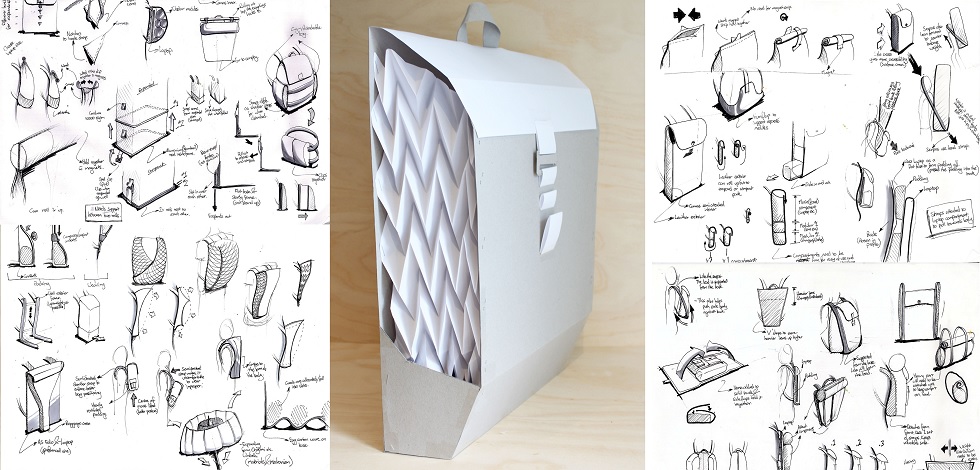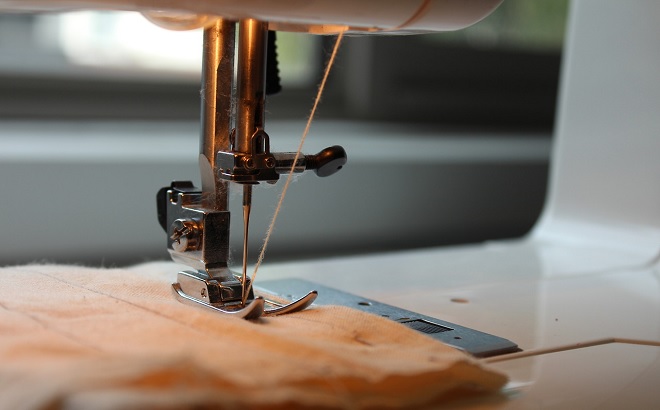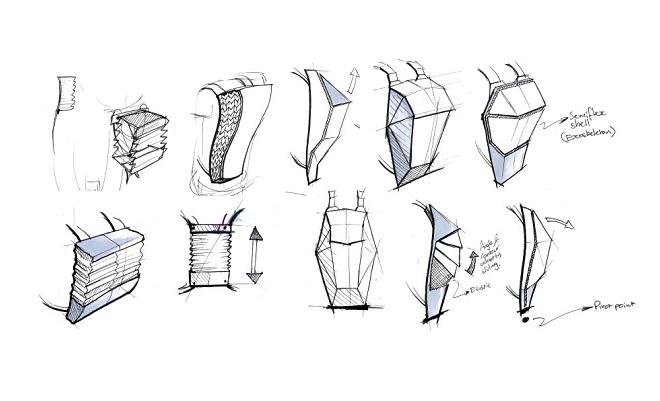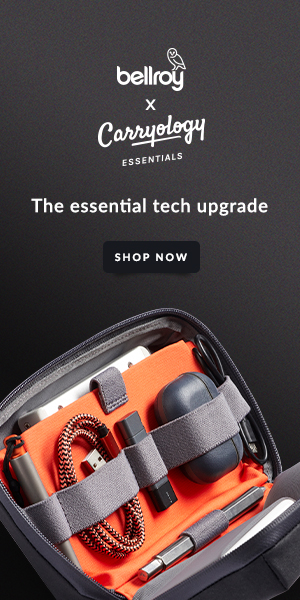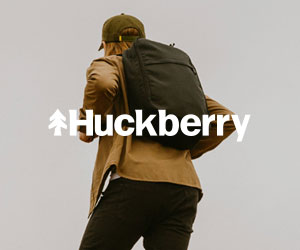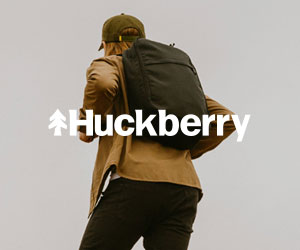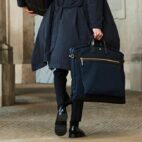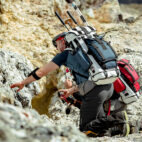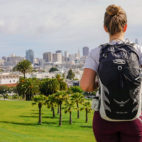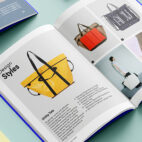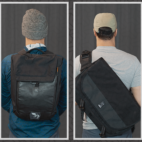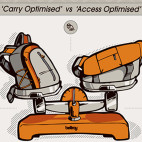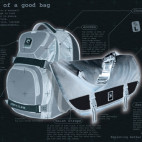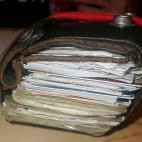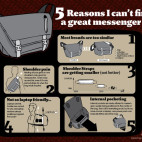Moondarra: Expanding the Backpack’s Contextual Use
Moondarra is a design project from Luke Phillips that takes its name from an unexpected source – a battle between a crocodile and python at Lake Moondarra that lasted for several hours. Eventually the crocodile was beaten through sheer exhaustion and the python proceeded to swallow the crocodile whole, in the process expanding its jaw and inner volume to more than twice its original size. It was the python’s natural ability to expand itself that inspired Luke to ask the question “What if a bag’s form behaved like a snake’s does, slim and compact, with the ability to expand and efficiently carry large forms?” The desire to explore this question led to Moondarra and Luke kindly agreed to provide first-hand insight into his project…
Within the bag industry there are many varying types of bag styles such as the messenger, backpack and tote bags. Each bag serves different functions for different contexts of use. But what if there was one bag that could serve the purpose of more than one of these styles?
Now before you think this is a load of bollocks, hear me out…
We are in exciting times for the world of carry. It is a great time to be exploring the relationships we have with personal possessions when on the move. In recent years there have been loads of new and exciting bag designs emerging around the globe. This is awesome for bag users and designers because it really pushes the envelope in terms of exploring why and how we carry.
Some think that a bag is never truly finished, that there can always be changes made to increase usability, longevity or utility. This is what inspired me to pursue a bag that is not ‘set in stone’ in terms of function. The process of developing this has been very constructive. Defining restraints and identifying possibilities for a bag of this caliber has been an exciting process thus far.
I am an avid bag user (Mission Workshop’s R6 Arkiv Field Pack with the laptop attachment) and am passionate about developing refined systems to transport the possessions we need on a day-to-day basis. But these possessions have a tendency to change depending on where we are going. Recently I have been working on a project that aims to disrupt the way we define a backpack.
“Researching the ways we transport personal goods with us in order to explore alternative carry options to produce an outcome that broadens our perception of a backpack’s functionality”.
Basically I am trying to do something different than a traditional backpack. The goal is to create a bag whose function can adapt with the user’s needs. Taking inspiration from a variety of mediums such as origami and the way form can transform. Imagine if you could have one bag that adapted to your changing daily needs while maintaining the ease of use demonstrated by bags from the likes of Mystery Ranch and Chrome Industries.
In tackling this notion I am exploring several different methods and techniques…
Currently I am in the middle of the prototyping process and am continually identifying new restraints and possibilities of what could be.
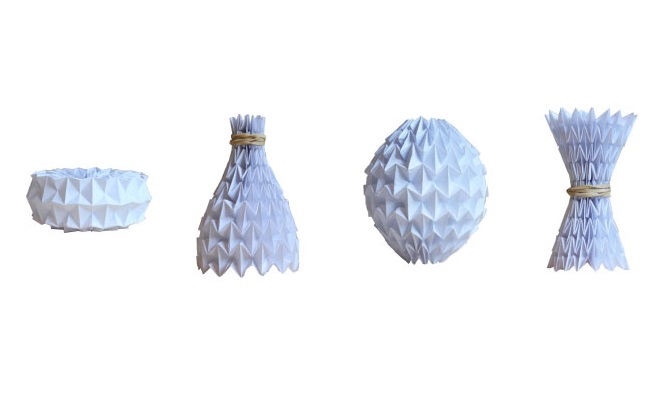
This ‘Magic Ball’ origami piece is extremely complex in geometry but amazingly adaptable in form. I began to fold pieces like this to better understand the way these geometries behave.
The mode of adaptability is being explored through the use of origami, which entails many different patterns and methods of transforming from a flat sheet of paper (or in this case, fabric). The extensive history and beauty of origami is slowly being recognized in the world of design for its unique ability to quickly transform functional objects. It is thanks to great minds like Robert Lang that we are seeing this trend. I am quickly learning and adapting to the way these structures behave in different materials and shapes. There have been several successful prototypes thus far and many more to come. Trying to harness the characteristics of origami into something more tangible is proving to be an interesting process, but it is one I am very excited about.
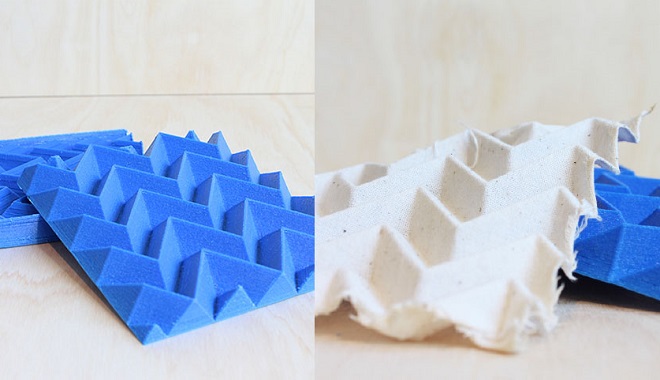
Since paper/fabric cannot be folded more than eight times it became difficult to create large origami patterns. Here I am exploring new ways to create the folds using a 3D printed mold. The process consisted of wetting the fabric, then drying it in the mold under a few kilograms of pressure. This test was successful and it has since been used with fabric stiffeners and silicone to give strength to the pattern.
The biggest challenge is applying strength to the origami patterns. They expand and contract in extraordinary fashion but they are very temperamental. Each pattern is a repetition of surfaces and folds; if any of these folds are deformed it breaks the entire structure’s ability to change. To fix this I am currently looking at creating a hybrid of materials between hard-shell body (plastic) and flexibility (fabrics) to create a form that can morph from one functional use to the next.
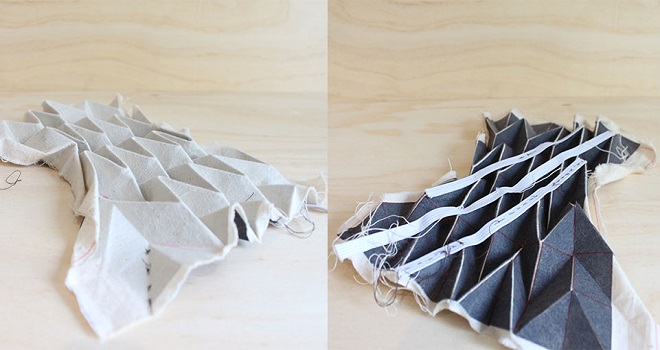
Another test to achieve the origami structure without having extensive fold involved. This process involved cutting the pattern out of interfacing and ironing it onto a sheet of fabric. This leaves the crease lines weaker than the body of the fabric. This technique also allows for greater variation in the pattern of the structure. You can create corners and curves rather than flat panels. Then elastic was sewn along the ribs to try and create a geometry that was no bigger than the objects it needs to carry.
Another source of inspiration is the structures of nature. Exploration of having an inner or exoskeleton to support the origami structures is underway. Applying strength yet sustaining the ability to adapt to new forms and shapes is the challenging aspect thus far.
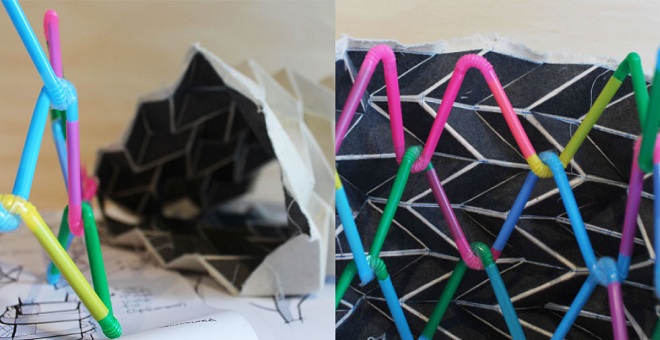
This is a representation of a skeleton-like structure to support the outer layer. Using straws and a ‘U’ shaped origami pattern to try and link the two together to expand and contract accordingly.
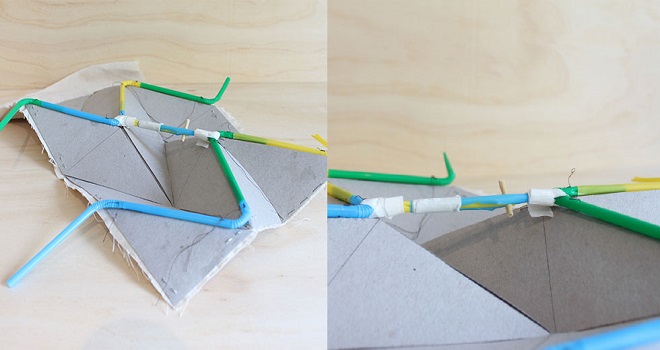
Trying to give the structure strength and keep the variability through sliders and reinforced ribs running along every raised peak of the pattern. This structure proved to be successful in concept, although is yet to be tested on a larger (and heaps more complex) scale.
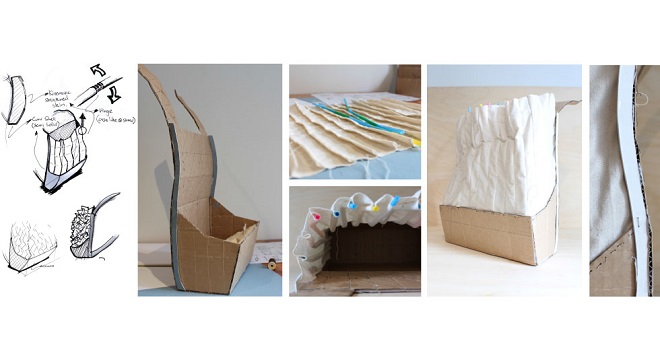
To push this concept of skeleton further I created a prototype of parallel straws with bends an even 40mm apart. I hoped to create a flexible skin-like structure but it is currently too restricted by the hard-shell base and back support (this will hopefully be solved in the next attempt).
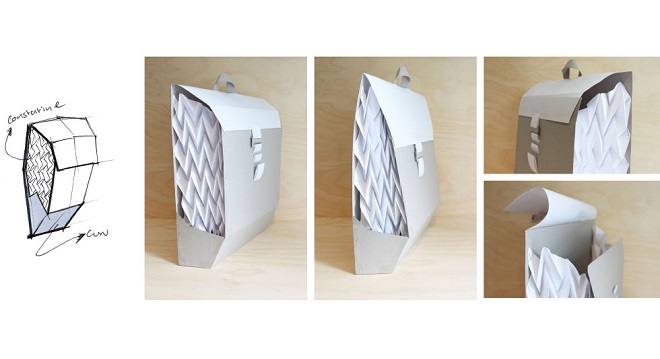
This is the most recent prototype; it runs as a hybrid between semi-flex plastic shell and flexible fabric origami. It was successful in function to adapt its volume organically. Yet the form will continue to be explored to better capitalize on the level of variation in volume.
They say form follows function, so if we can change a bag’s form, we can change its function, right? Well it isn’t quite that simple but through design this can be achieved. I am not talking about some crazy folding bag that takes four hours to fold into shape. I am talking about simple use of geometry that can radically change the form and volume of a bag quickly and effectively. Origami is a great example of this, but translating its characteristics into a tangible backpack calls for some serious designing. The design process is well underway and I am extremely excited about the possibilities it holds.
So can a bag adapt to function in more than one environment by changing its form and therefore its capacity to carry? Well I guess there is only one way to find out.
The project is still very early in its development. I would love to hear your feedback on it thus far and possibilities of where you think it could go. If you have a spare minute feel free to answer some questions below or leave a comment.
Where can you see a bag of this caliber fitting into your lifestyle?
What combinations of bags would you like to see? For example: A weekend pack that can compact down to a small briefcase?
If you had a bag that could easily change its volume in a few seconds, how often do you think you would alter it?
You can find more information at my Tumblr account.
Have a ripper day.
Cheers.
Luke Phillips.
Thanks to my supervisor, David Flynn, for his wise words of wisdom thus far and to Michael Knispel at Carryology for the opportunity.





 Carry Awards
Carry Awards Insights
Insights Liking
Liking Projects
Projects Interviews
Interviews
